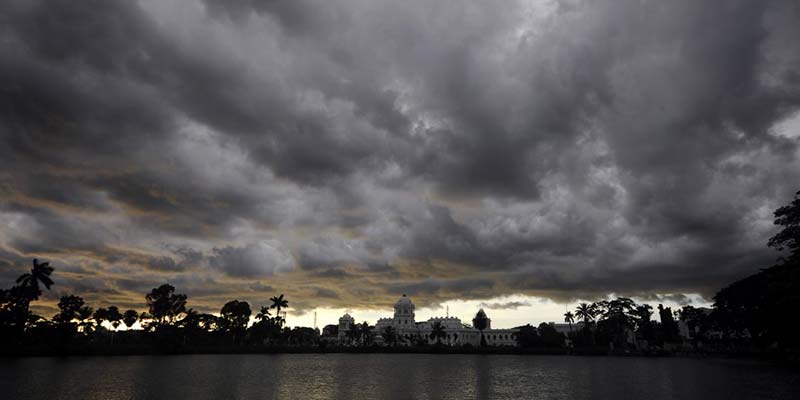- India
- Jan 15
Explainer - 150 years of India Meteorological Department (IMD)
• Prime Minister Narendra Modi launched ‘Mission Mausam’ during a function to celebrate 150 years of the India Meteorological Department (IMD)
• The Prime Minister also unveiled a commemorative postage stamp and coin, alongside releasing the IMD Vision-2047 document, which outlines a roadmap for weather resilience and climate change adaptation as India prepares to mark 100 years of independence in 2047.
• Mission Mausam aims to achieve its target by developing cutting-edge weather surveillance technologies and systems, implementing high-resolution atmospheric observations, next-generation radars and satellites, and high-performance computers.
• It will also focus on improving the understanding of weather and climate processes, provide air quality data that will help strategise weather management and intervention in the long run.
Establishment of IMD
• India had some of the oldest meteorological observatories of the world and the first astronomical and meteorological unit started at Madras in 1793.
• A disastrous tropical cyclone struck Calcutta in 1864 and this was followed by famine in 1866 and 1871.
• On January 15, 1875, the India Meteorological Department (IMD) was established with its headquarters in Calcutta, bringing all meteorological work in the country under a central authority.
• The headquarters was shifted to Shimla in 1905, to Pune in 1928 and then to Delhi in 1944.
• It is the national meteorological service of the country and the principal government agency for all weather and climate services.
• The IMD marks a significant milestone as it celebrates 150 years of dedicated service to the nation.
• IMD has been at the forefront of providing critical weather and climate services, playing a vital role in disaster management, agriculture, aviation, and public safety.
The growth of IMD
• IMD has been at the forefront of meteorology, seismology, and allied disciplines, playing an integral role in safeguarding lives, supporting economic development, and advancing scientific research for societal benefit.
• From a modest beginning in 1875, IMD has progressively expanded its infrastructure for meteorological observations, communications, forecasting and weather services.
• In the telegraph age, it made extensive use of weather telegrams for collecting observational data and sending warnings. Later, IMD became the first organisation in India to have a message switching computer for supporting its global data exchange.
• One of the first few electronic computers introduced in the country was provided to IMD for scientific applications in meteorology.
• India was the first developing country in the world to have its own geostationary satellite — INSAT — for continuous weather monitoring of this part of the globe and particularly for cyclone warning.
• IMD boasts of 39 Doppler Weather Radars for better observation and prediction of extreme events across the country by 2023, along with INSAT 3D/3DR dedicated weather satellites providing every 15 minutes cloud imagery. About 200 Agro-Automated Weather Station (AgroAWS), 806 Automatic weather stations, 1,382 automatic rain gauges, 83 lightning sensors along with 63 pilot balloon upper air observation stations serve as the backbone of weather observation services of IMD throughout the country.
• Since its establishment, the IMD has served the cause of safety and well-being of people against weather related hazards and helped in the economic development of the country.
• It is one of the few departments of the government whose services touch almost every aspect of life and across all sectors of economy.
• It functions under the Ministry of Earth Sciences (MoES) with its headquarters at Mausam Bhawan in New Delhi.
• IMD houses advanced meteorological instruments, state-of-the-art computing platforms, weather and climate prediction models, information processing and forecasting system and warning dissemination system.
• The Director General of meteorology is the head of the IMD.
• IMD works in a coordinated manner with headquarters at Delhi and six Regional Meteorological Centers (RMCs) catering to six different regions of the country. These RMCs are further assisted by 26 Meteorological Centers (MCs) at state level that are specialised for observing and disseminating information, advisories and warnings about regional weather.
• The different dedicated divisions in IMD headquarters like National Weather Forecasting Center (NWFC), Numerical Weather Prediction (NWP), Satellite Meteorology Division, Upper Air Instrument Division, Hydrology division and Information System & Services Division (ISSD) and Climate Research & Services Division of IMD Pune support the overall forecasting, monitoring and dissemination services of IMD.
• IMD is not only catering to the Indian region but also provides cyclone forecast and warning services to 13 north Indian Ocean countries along with forecast and warning services to SAARC nations.
• IMD's services have been instrumental in mitigating the impact of natural disasters, supporting agriculture, water management, aviation, and other sectors, and contributing to the socio-economic development of India and the broader region. Today, it stands as a cornerstone institution in weather and climate services, driving resilience and sustainability in the face of climate challenges.
Objectives of IMD:
• To take meteorological observations and to provide current and forecast meteorological information for optimum operation of weather-sensitive activities like agriculture, irrigation, shipping, aviation, offshore oil explorations, etc.
• To warn against severe weather phenomena like tropical cyclones, norwesters, dust storms, heavy rains and snow, cold and heat waves, etc, which cause destruction of life and property.
• To provide meteorological statistics required for agriculture, water resource management, industries, oil exploration and other nation-building activities.
• To conduct and promote research in meteorology and allied disciplines.
• To detect and locate earthquakes and to evaluate seismicity in different parts of the country for development projects.
Manorama Yearbook app is now available on Google Play Store and iOS App Store



